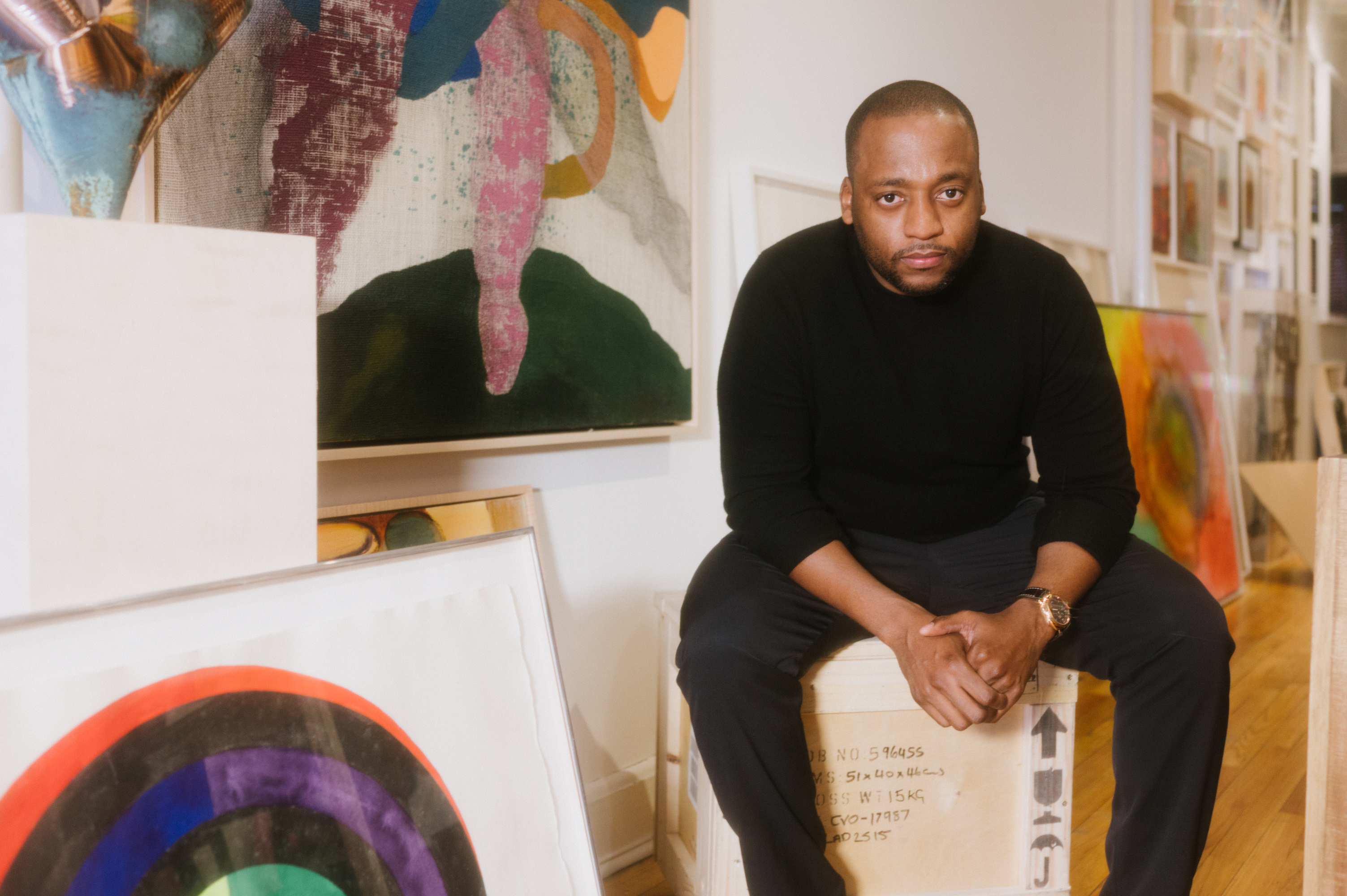
The Haiti-born, New York-based art advisor Gardy St. Fleur had one of the most high-profile collectors in the world as his first client: the late Peggy Cooper Cafritz. After Cafritz, who was renowned for her collection of African American art, hired St. Fleur to help her find new artists, he branched out and began advising athletes including basketball players Kyrie Irving, Courtney Lee, and Caris LeVert, as well as ballet star Misty Copeland.
With a focus on both historical artists such as Hervé Télémaque and Beauford Delaney as well as emerging talent, St. Fleur has also built a formidable collection of his own. We spoke to the Brooklyn-based art advisor about how he lives with art and what he’s looking at now.
An assortment of works in St. Fleur’s collection featuring artists: Amarylis De Jesus Moleski, Bri Brooks, Alexandria Smith, Eden Seifu, Hiba Schahbaz, Coady brown, Sahana Ramakrishnan, John Rivas, Nate Lewis, Florine Demosthene, and Nikita Gale.
What was your first acquisition?
A small painting from 1993 by the artist Fritz St. Jean.
What was your most recent acquisition?
An abstract painting by Nigerian painter Chibuike Uzoma; a wall sculpture by Nikita Gale; a Young-Il Ahn painting; and an early Ab Ex work by Vivian Springford.
Bethany Collins, Untitled (To My Father I-II) (2020). Courtesy of the Artist and PATRON Gallery, Chicago.
Which works or artists are you hoping to add to your collection this year?
Artwork by Caroline Kent, Jennie C. Jones, Delphine Desane, Samuel Hindolo, Atta Kwami, Julien Creuzet, Reggie Burrows Hodges, and Thaddeus Mosley.
What is the most expensive work of art that you own?
I do not like to think about my most expensive piece.
Nikita Gale, BLANK FLEX (2019). Courtesy of the artist and REYES-FINN.
Where do you buy art most frequently?
Directly from artists’ studios, galleries, and auction houses.
Is there a work you regret purchasing? If so, why?
Yes…
What work do you have hanging above your sofa? What about your bathroom?
Above my sofa is Dilo (2017), a lightbox piece by Tabita Rezaire. Next to it is Jacques Gabriel’s Portrait of a Woman (1979) and a work on paper from William Villalongo’s “Nymph” series.
And in the bathroom, there is a toilet-paper holder from Evan Holloway.
Jacques Gabriel, Portrait of a Woman (1979) and William Villalongo’s Nymph #70 in the collection of Gardy St. Fleur.
What is the most impractical work of art you own? What makes it so challenging?
NL%PHONEFARM by the artist Nandi Loaf. I’ll include the full description of the work, which speaks to its complexity: “Nandi Loaf exhibits 9 acrylic boxes housing 18 phones connected to USB adapters, extension cables, and a surge protector. The phones, as displayed together, actualize a phone farm: a popular mid-late 2010’s DIY server farm, where an individual would purchase bundles of cheap ‘burner’ smartphones (priced as low as 30 dollars) to passively stream online content, play games, or mine Bitcoin. In return, the individual receives a cash payout, at fractions of a penny per minute. The height of phone farming plateaued a few years ago, and now the extraction of cash is a Sisyphean task, all deliberate and calculated on Nandi Loaf’s behalf. The phone farms, as deployed by Nandi Loaf, are automated, self-employed, autonomous art-workers all at the service and behest of Nandi Loaf’s practice. The mangled, bodily system of cables likely spends more money pulling electricity than the payout she’ll eventually receive. Nandi Loaf’s phones are a self-effacing jab at the emerging artist and an attempt to rewire the traditional networks of capital they must flow within.”
Jonathan Payne, Outer Limits (2018). Photo: James Bessoir. Courtesy of Gardy St. Fleur.
What work do you wish you had bought when you had the chance?
A beautiful sculpture by Martin Puryear.
If you could steal one work of art without getting caught, what would it be?
David Hammons, Injustice Case (1970) at the Los Angeles County Museum of Art; Gerhard Richter, St John (1988) at the Tate; and Clyfford Still, Untitled (1960) at the Metropolitan Museum of Art.